The Cross-section Canyon, a Exploration of Sustainable Exhibition Construction.
The SHEERIN Pavilion for 2023 Guangzhou Design Week provides an exhibition space for sintered stones. Artificial stones are employed to simulate the natural ones, aiming to present a spatial ambiance of a mined artificial stone canyon. This simulation and representation create a captivating juxtaposition. The systematic design of space, scene, and structure not only presents the unity of form and force, and the connection between behavior and space, but also provides the possibility of recyclability of the exhibition venue. It is a exploration of sustainable exhibition construction.
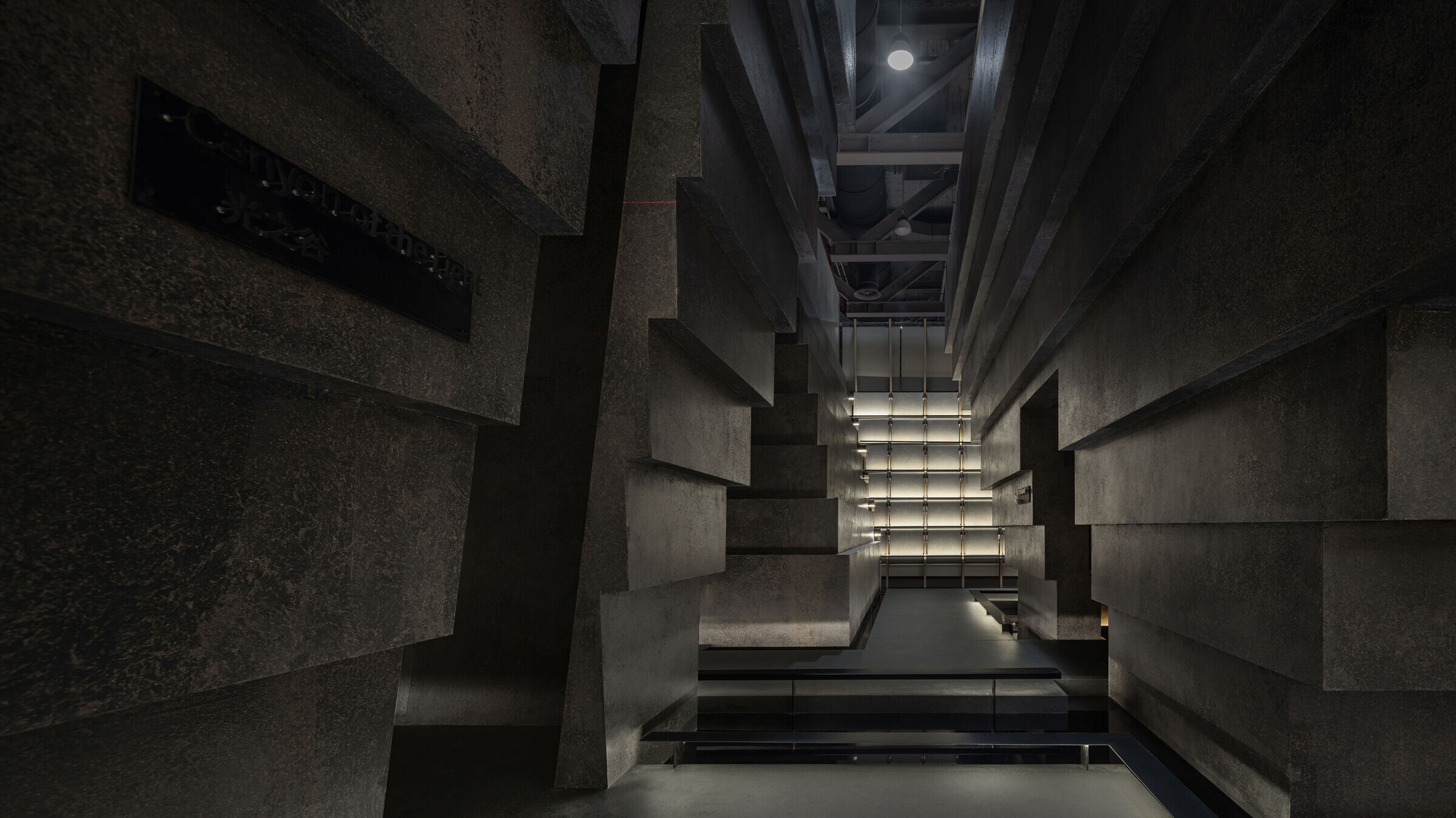
# Preface
Contrast
The SHEERIN Guangzhou Design Week Exhibition Hall provides an exhibition space for sintered stones. Artificial stones are employed to simulate the natural ones, aiming to present a spatial ambiance of a mined artificial stone canyon. This simulation and representation create a captivating juxtaposition. The concepts of "artificial" and "natural" interchange and blend within the material properties and spatial atmosphere, giving rise to an intriguing space.
The concepts of "artificial" and "natural" interchange and blend within the material properties and spatial atmosphere, giving rise to an intriguing space.
# Chapter I
Behavior
The entire exhibition hall revolves around the core spatial behavior of "wandering". Pathways weaving through three distinct volumes guide the visitor's tour and connect the serene spaces representing "sound", "light", and "water".
The three volumes, arranged in a staggered manner in the shape of normal and inverted pyramids, form an "outer corridor and inner canyon" spatial structure. The space that overhangs outwards creates the "Sound Valley" theater and the "Water Valley" space on the inside. This mutual internal and external relationship ensures the authenticity of space and form.

The exterior facade showcases the sintered stone surface supported by a wooden structure, which protrudes outwards and connects with the beam-on-foundation via steel cables. The spatial and mechanical relationship in the entire design is built upon cross-sections. Our goal is to attain unity between form and force from another perspective.

# Chapter II
Force & Form
[We are passionate about the visible forms but frequently disregard the unseen, like invisible forces. In fact, if everything were as it appears on the surface, science wouldn't be essential.]
Overturning & Gathering
The rich form we aspire to present in the design is the unity of space, structure, and scene. Therefore, addressing the relationship between force and form becomes an inevitable consideration in space creation.
Consequently, the "space" and "scenario" generated from considerations of cross-sections naturally become the logical foundation for structure formation. Each outwardly extending space surface is pulled together by tie beams at the top, creating a volumetrically stable inverted pyramid. Here, the visible "form" and the invisible "force" produce an intriguing juxtaposition.
Components & Structures
After establishing a unified system of space, structure, and scenario, we hope that the construction will also respond to the "macro system" of the structure, seeking to minimize unnecessary embellishments and slash construction costs through CNC machining technology.
Therefore, small components such as wooden parts generated from CNC machines, conventional batches of metal parts, and customized batches of metal parts that are pieced together to form the exterior facade, may evolve into various forms. Intended as a sustainable design endeavor, the guiding design approach, featuring small components, mass production, and highly mechanized production processes, can systematically form an entirety using scattered parts, decrease costs, and achieve efficiency and recyclability.
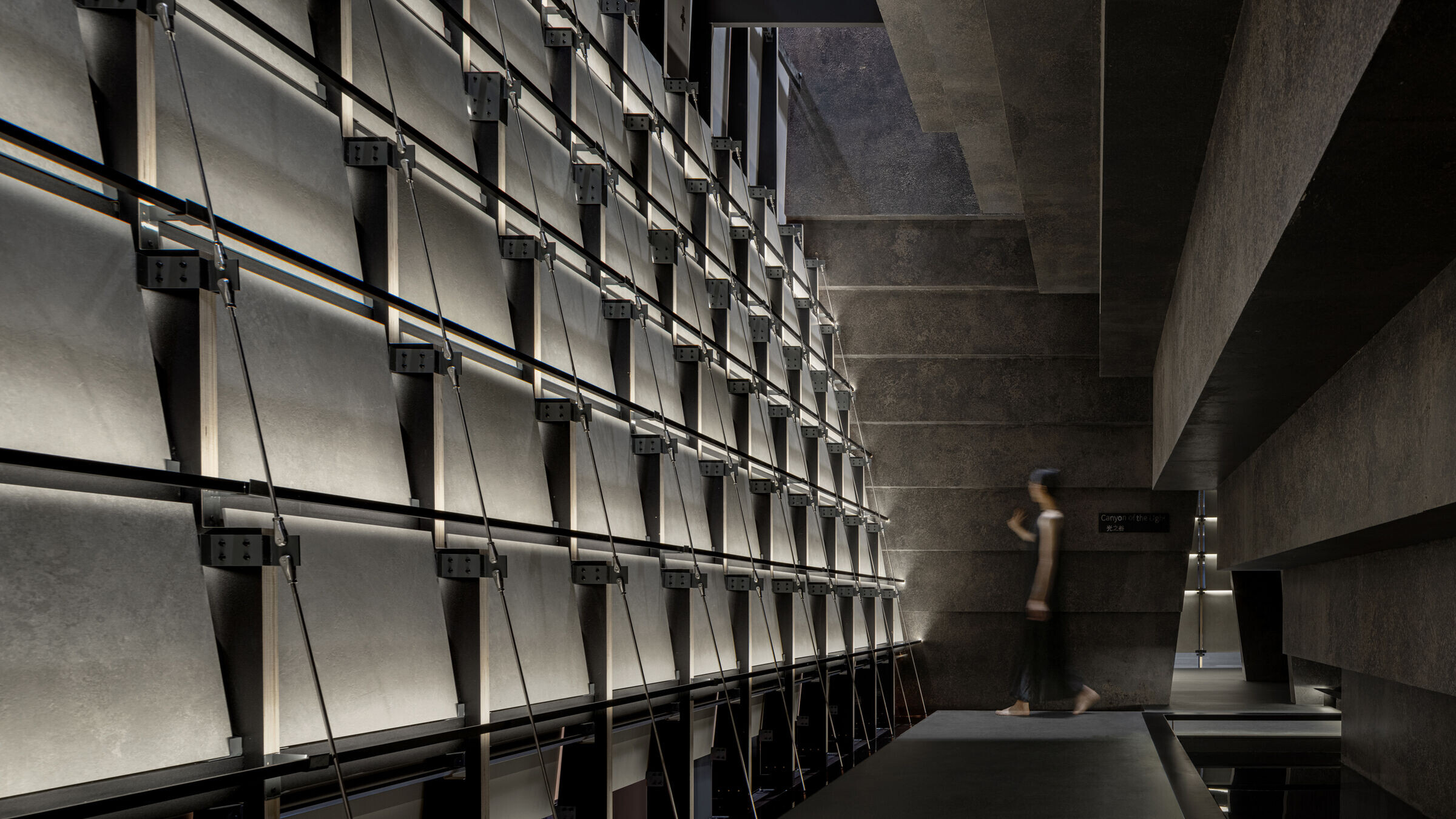
To maximize the display of sintered stones, the surface of the entire wooden structure adopts a double-layered approach, with the outer layer consisting of an “Ⅰ”-resembling large sintered stone arrangement, and the inner layer comprising small panels.
# Chapter III
Sections
Start from Sections
At the beginning of the design, we took spatial cross-sections as the focal point of our consideration, rather than the traditional flat functionality. This thinking model aligns with the logic envisioned by James Frazer Stirling, who started from cross-sections to liberate design from the confines of flat functionality.
Instability and stability
The construction of the complete force system results in the embryonic form of outwardly cantilevered spatial relationships, evoking a sense of urgency akin to traversing a "canyon" across diverse spatial segments inside and outside. This gives rise to the sense of contradiction between the "instability" in the segment and the "stability" in the overall system, offering yet another captivating juxtaposition.
To be precise, looking from the perspective of cross-sections, crafting an internal stepped theater was initially essential to achieve unity and authenticity in the relationship between the "inside" and "outside".

Hence, a space resembling a "bowl" and outwardly inclined "rock walls". The moderate volume allows for the establishment of a structure pulled together by tie beams in the middle, leading to the initial spatial relationship characterized by layers enveloping outwardly.
Canyons & Valleys
The imposing sense created by the outer rim and surface of the "bowl" echoes the imagery of a mined canyon. The interior reveals a hollow space, resonating with the exterior shape of the "canyon". This enables users to encounter varied spatial experiences across different scales and scenarios.
# Chapter IV
Scenario
[Scenarios are produced based on human behavior and mirrored through human experience. Constructing creative spaces that align with fundamental human sensations stands as a pivotal topic in our reflection on space creation.]
Basic Form
The three symbols signifying the fundamental elements of "sound", "light", and "water", in addition to the installations or sculptures in the design, are generated from the basic geometric symbol of a regular hexagon. The three installations- the "Sound Horn", the "Flowing Monument", and the "Cut Light Cone", correlate with diverse scenarios, intending to instill tranquility in viewers utilizing the basic forms.

Sound Valley
The "Sound Horn", a sizable speaker crafted from sintered stones, fuses acoustics into its shape, capable of geometrically magnifying the sound at the end. It can also function as background lighting for performers, establishing a harmonious design with the performance stage on the ground.
The stage, also hexagonal, comprises six movable equilateral triangular stools connected by wedge-shaped metal rivets. The separable and combinable design satisfies the functional requirements in various scenarios within the "Sound Valley" theater.
Sintered stones, the predominant materials for the space, blanket the interior of the "Sound Valley" theater. The craftsmanship, "tight joint of external corners", and the "large size" property make the theater akin to a hewn stone altar.
Water Valley
The "Flowing Monument" is a pointed monument cut open by three cascading water streams. Its nearly vertical slope aligns with the slope of the interior space and the arch-shaped doorway. Depending on a slight slope and liquid tension, the water naturally flows downward.
The detached tower tip is actually a pendant lamp. The light shines downward onto the water basin at the top of the monument, reflecting ripples onto the ceiling.
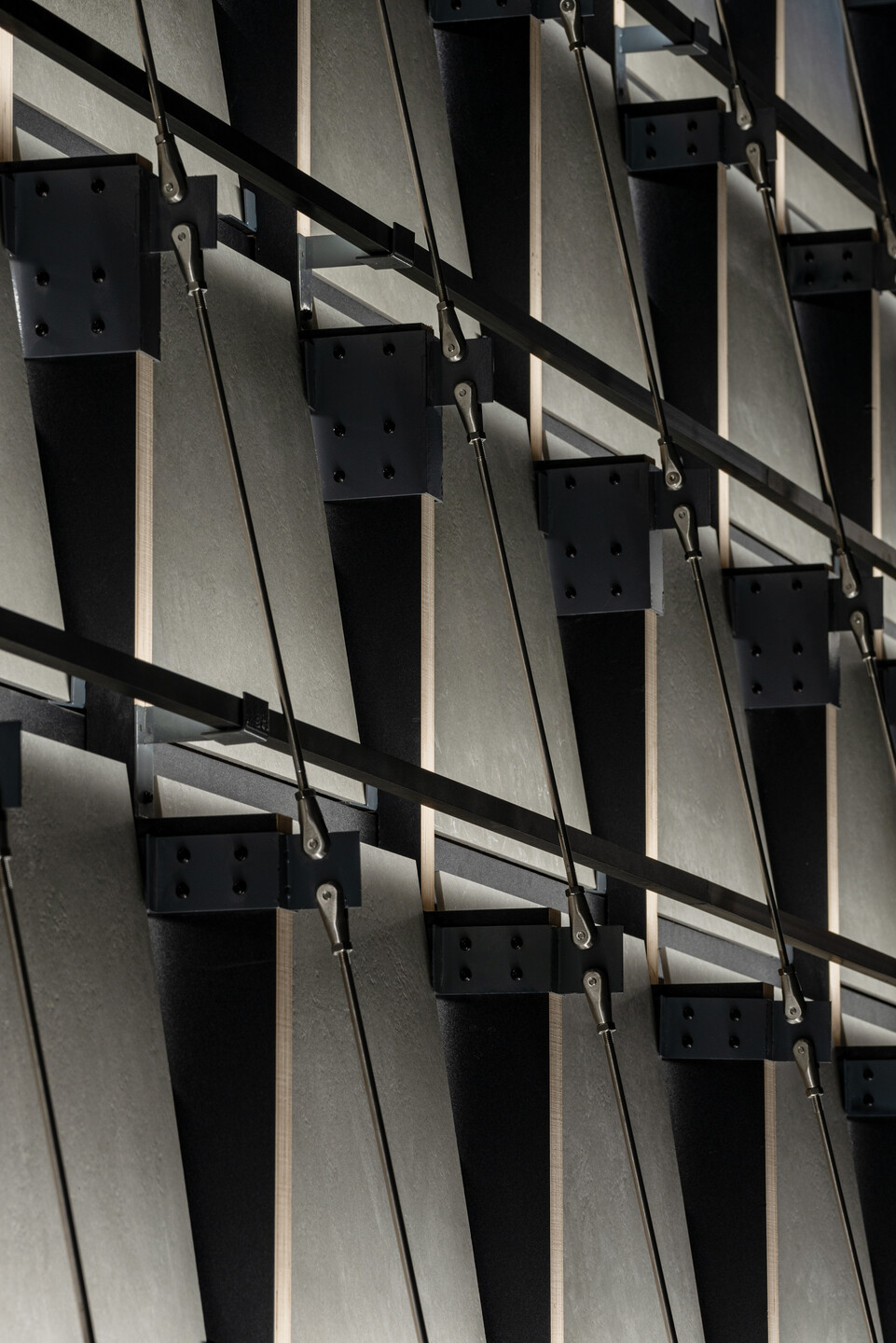
Light Valley
"Light Cone" is a geometric model in physics describing the propagation of light in time and space, with a rigorous scientific definition. The "Cut Light Cone" mentioned here is merely a playful artistic expression inspired by the concept, devoid of any mysterious connections.
The "Cut Light Cone", also originating from regular hexagons, gives off laser beams from narrow, cracked openings. The laser interacts with the smoke filling the space and produces the Tyndall Effect and a "plane of light" from a cut cylinder, evoking a mysterious ambiance and representing our continual exploration of the "unknown territory" in design.
# Chapter IV
Sustainable
“100 million cubic meters of waste”
Total count of offline exhibitions in China in 2019: 11,033.
Cumulative direct attendance: 86,000,000 visits (86 million).
Cumulative exhibition venue construction area: 148,770,000 ㎡ (14.8 billion ㎡).
Waste generated from exhibition venue demolition: 119,016,000 m3 (119 million m3), equivalent to the spatial volume of seven Bird's Nest stadiums.
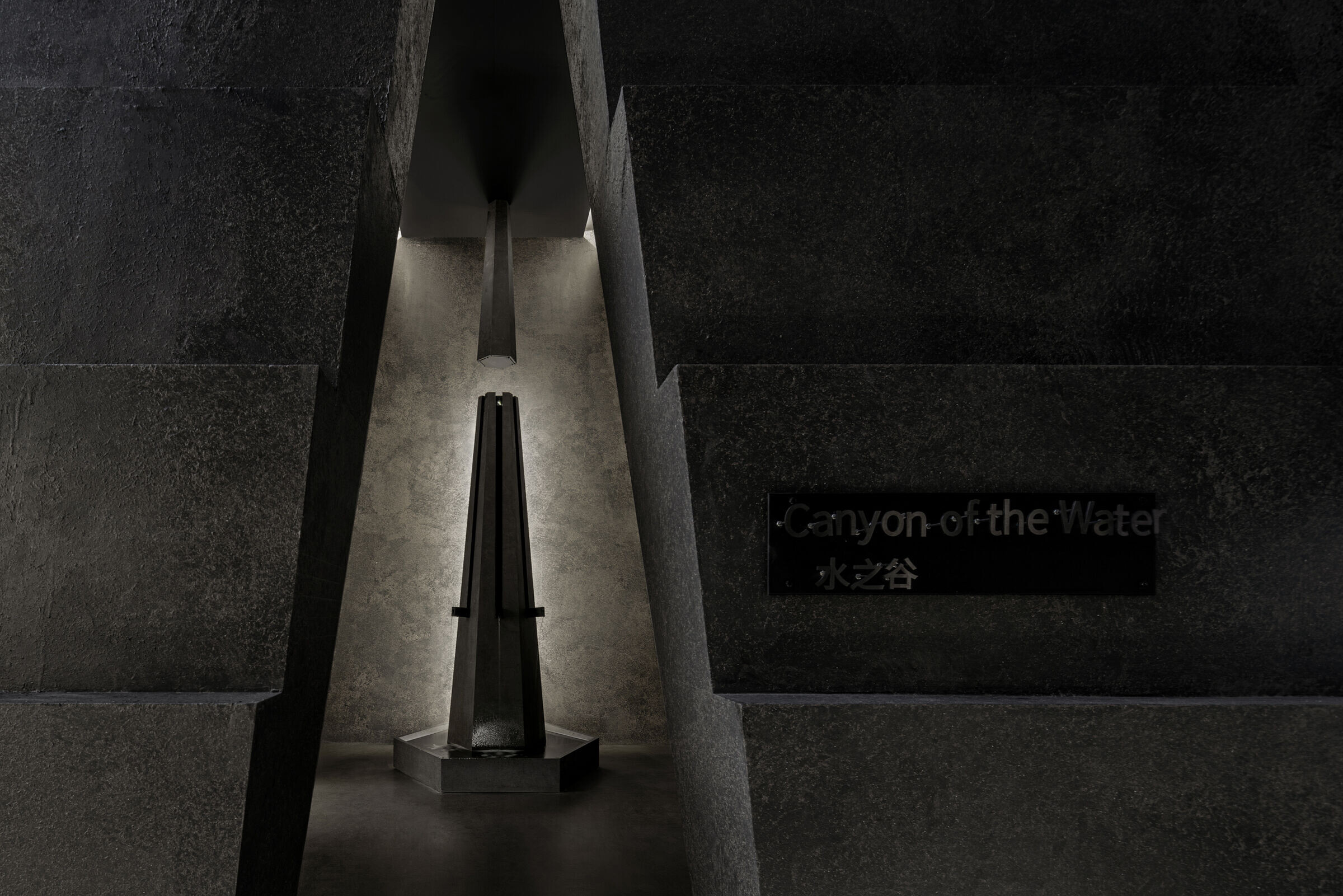
Commodity fetishism
In such an era so ubiquitous with images as today, people find themselves increasingly ensnared in the prison of spectacle fetishism (Guy Debord). Scene-set design is highly commonplace and is transforming commodity fetishism into spectacle fetishism. After the brief dazzling visual experience of each magnificent exhibition, except for the fading glamour associated with the enterprise and designer, all the brilliant structures crumble into dust, thoroughly destroyed.
While this is a display space placed in the exhibition center, it is customary to design a space within another space into a one-time scene. In theory, considerations for weather resistance and structural issues may be unnecessary. However, at the beginning of the design, we regarded it as an independent building to leave some room to maneuver for subsequent recycling and expansion.
Thus, we extensively deliberated on the integrity of the building structure and its weather resistance (While all structures inside the venue cannot exceed 50% ceiling coverage to ensure water sprinkling and fire extinguishment, the roof structure and requirements for waterproofing and thermal insulation can be modified and expanded in design if the structure is placed outdoors.)
Recycling and Reconstruction
After the exhibition, the surface will be transformed into bookshelves, pavilions, or architectural surfaces, potentially turning into a community book kiosk bathed in afternoon sunlight, a bookshelf filled with donated books in a corner of a rural school, or a maintenance facade for a deteriorating wall of an old building to be renovated.
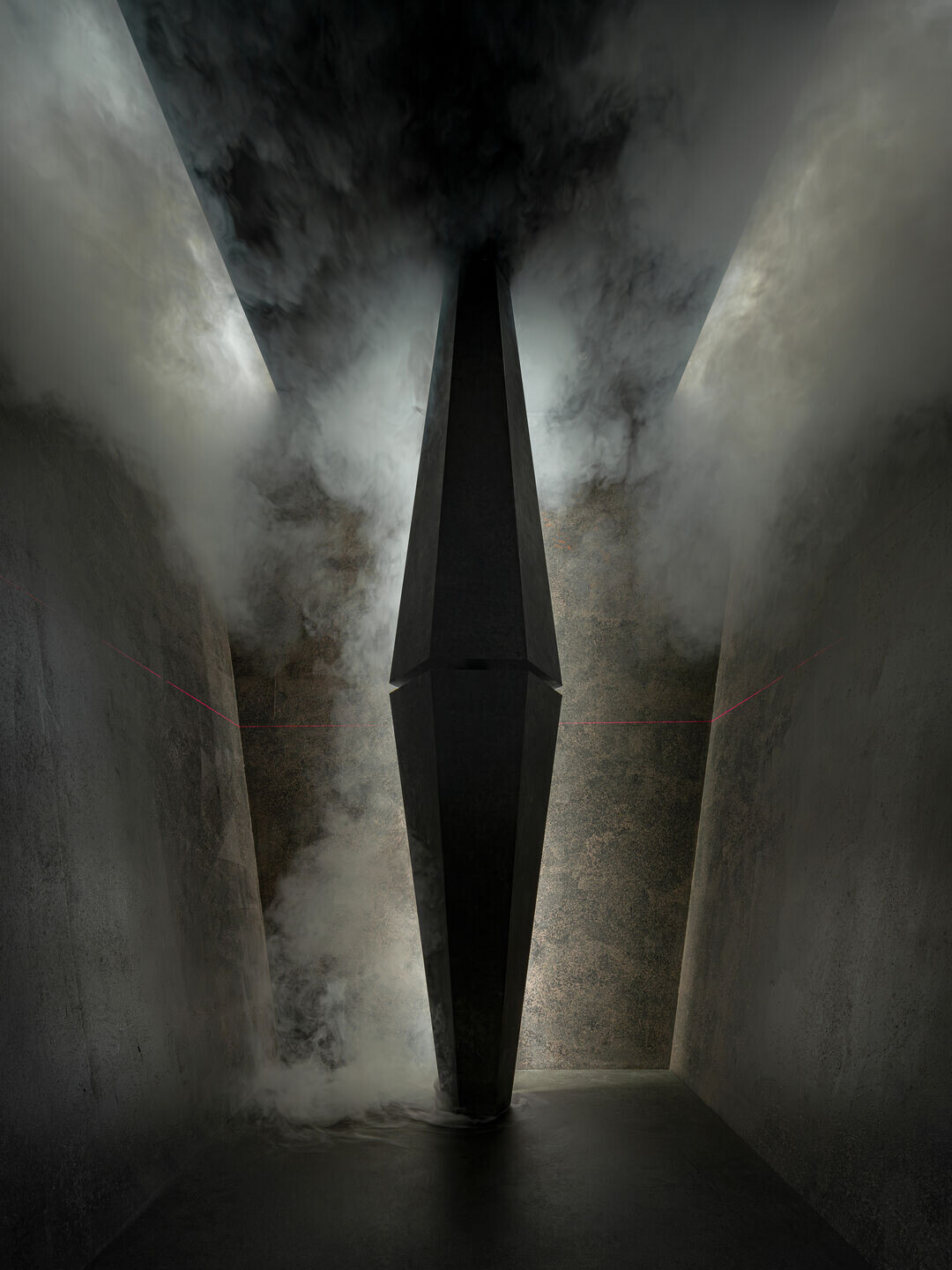
L . M . S
As part of the building's exterior surface system, the recycled framework can be applied to any old building requiring surface maintenance, thus forming a ventilated and weather-resistant double-surface system.
Medium-scale reconstruction-book kiosk
The exterior of the 5x5-meter book kiosk, created using 20 sets of inclined columns, is outfitted with drip components and a sunlight panel roof for waterproofing. Internally, metal crossbars and glass layer panels are incorporated to fashion a bookshelf.
Small-scale reconstruction-bookshelf
At the beginning of the design, the newly added metal support, coupled with the pre-drilled holes for the screws of the diagonal bar, could be tightly locked with the original metal parts.
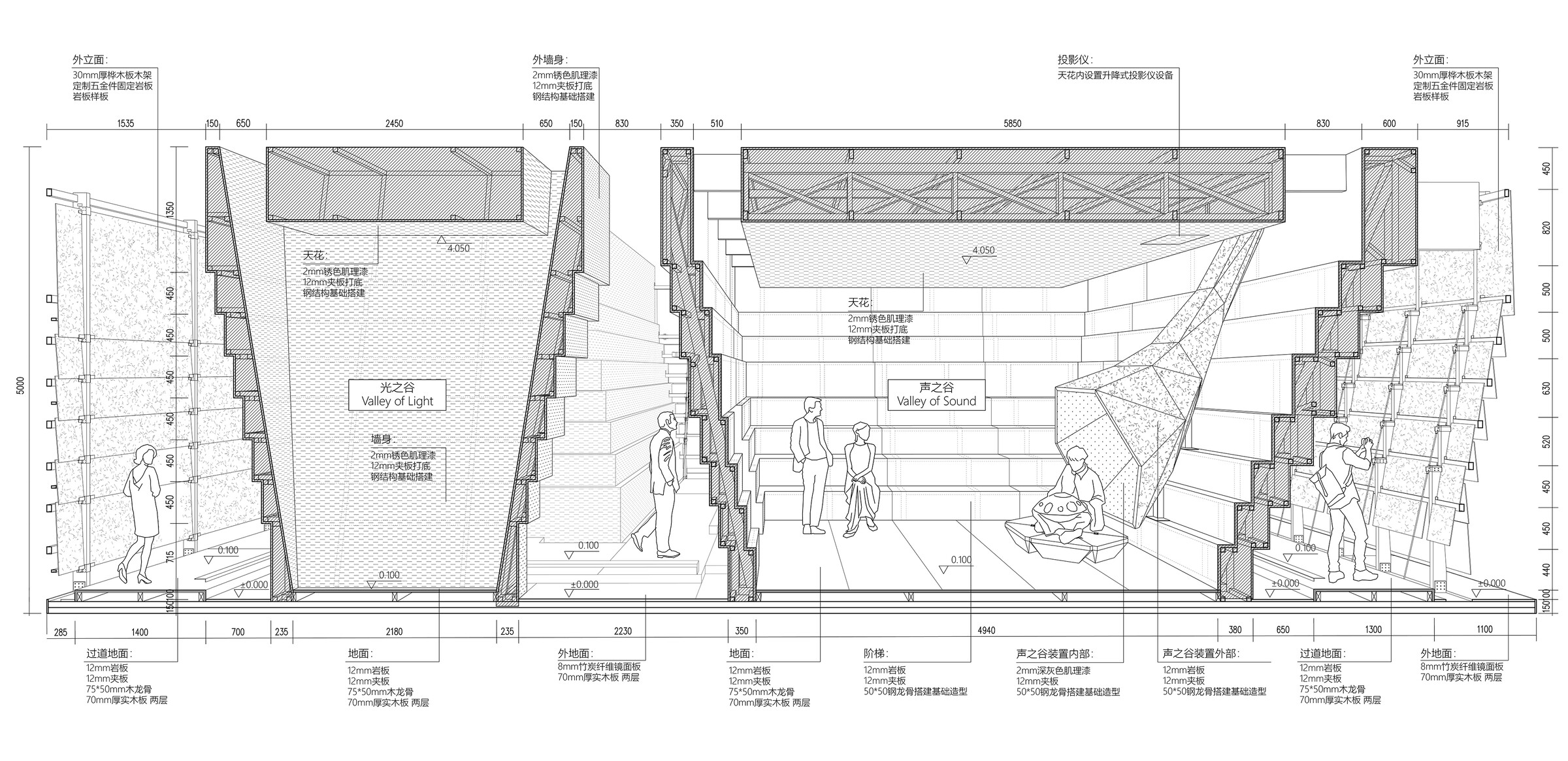

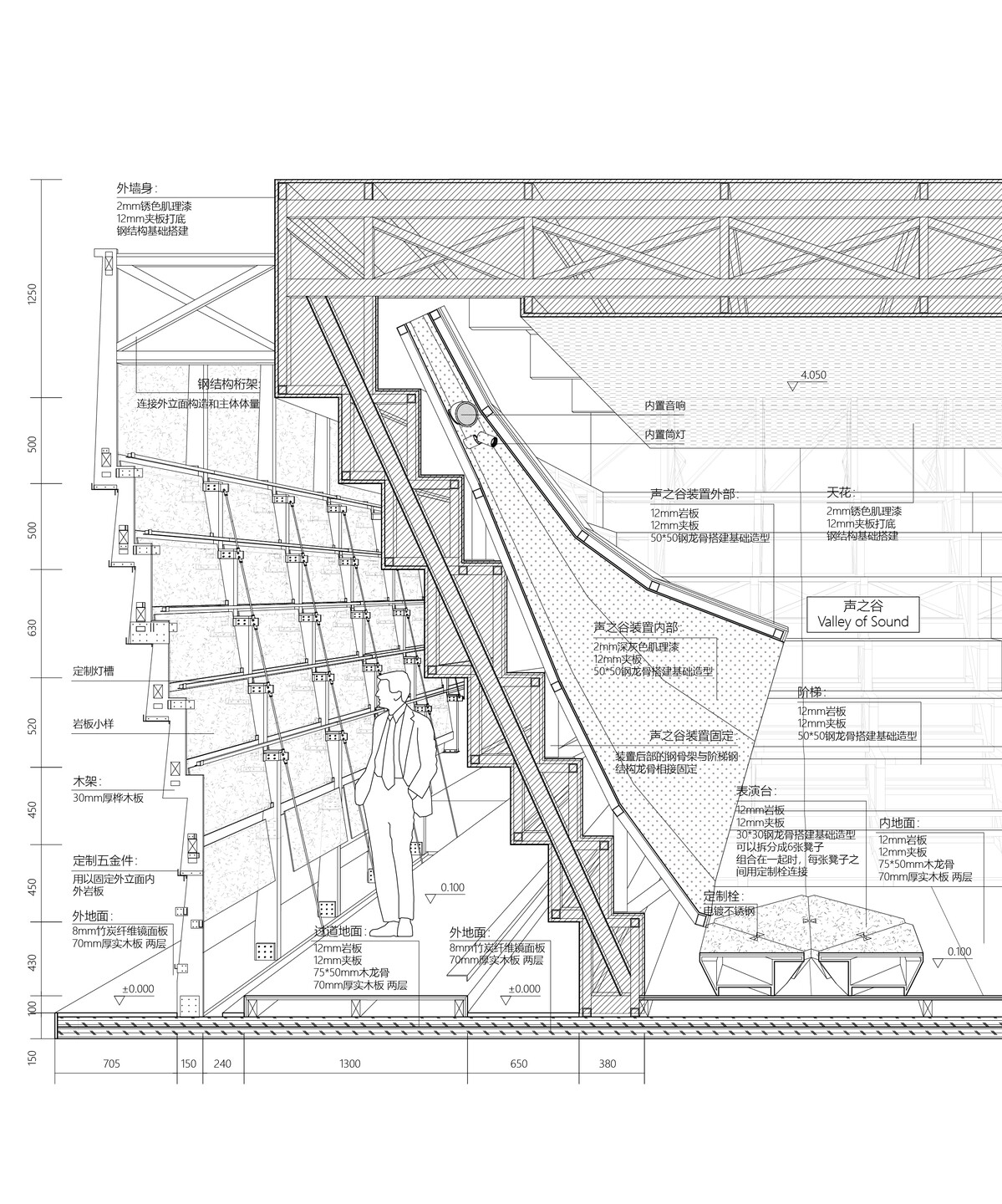
Project Information:
Project Name: SHEERIN Pavilion for 2023 Guangzhou Design Week
Design Firm: PMT Partners Ltd.
Principal Architects: Weihao Zhao, Yan Hu , Zhe Zeng
Design Team: Zhenlin Gu, Haozheng Guan, Xiaohong Guo, Yaopeng Wen, Wei Chen, Bokai Zhang
Photographs: Zhaoliang Qin
Client: SHEERIN
Building Area: 192 m2
Completion Year: 2023







































